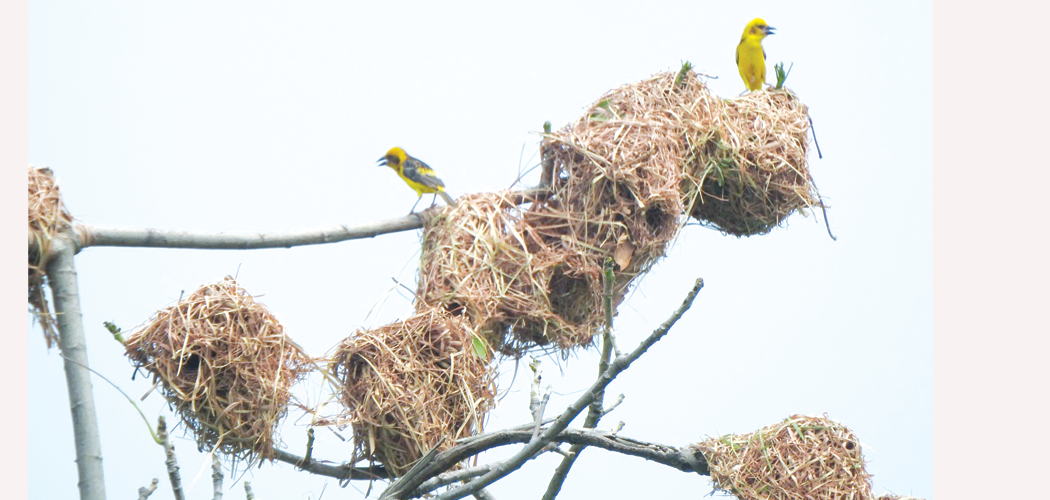- Thursday, 4 September 2025
Finn’s weaver population declining
By Abinash Chaudhary Kanchanpur, July 6: The number of world’s rare Finn’s weaver bird, which is found only in Shuklaphanta National Park in Kanchanpur in Nepal, has been gradually declining.
The annual census conducted by Bird Conservation Nepal (BCN) has shown that the number of birds has been declining over the past few years. The organisation has been conducting counts and inspecting the nests of these rare Finn’s weaver birds every year to understand their condition in Nepal.
Ornithologist and expert at BCN Hirulal Dangaura, who has been leading the census, said that the number has been gradually declining for the last five years since 2014. “Even this year, the number has dropped compared to last year,” he said.
In 2017, the highest number of birds (300) was recorded in Shuklaphanta National Park. Then 254 individuals were recorded in 2018; 176 in 2019; 253 in 2020; 248 in 2021; and 244 in 2022. Only 60 individuals were counted in 2014; 200 in 2015; and 250 in 2016.
The International Union for Conservation of Nature (IUCN) has placed Finn’s weaver on the red list since 2021 due to its declining numbers. For Nepal, the bird is one of the most endangered species. It is said that the species disappeared from Koshi Toppu Wildlife Reserve in 2007.
The condition of the bird in Shuklaphanta is the best in the world, said Kishor Mehta, Chief Conservation Officer of Shuklaphanta National Park. “Not a single state in India has that number,” he said.
The birds are found in Lalpaniphanta, Mohanpur, Andaiya, Pattaiyaphanta, Sikari Lake, Sinhapurphanta, and Darakh grasslands of Shuklaphanta. Of these, Mohanpur and Lalpaniphanta have the best habitat for Finn’s weaver.
Although the destruction of the habitat is the main reason for the declining number of birds, the overall condition in Shuklaphanta is still good, said Dangaura.
According to him, a special type of place is needed for bird habitation. Grassland is essential for bird breeding as well as for nesting. It is said that it is necessary to have a pond or river near the grassland with trees.
Finn’s weavers nest and raise their offspring from May to September. It is said that this bird builds a fake nest to deceive the birds of prey and builds a real nest at a distance of one to three kilometres.
The bird, which feeds on insect larvae, also eats a small number of grains and straw flowers in the lake, said Dangoura. He said that detailed research was needed on Finn’s weavers found in Shuklaphanta.
The first Finn’s weaver in Shuklaphanta was found in 1996 by noted ornithologist Dr. Hem Sagar Baral. At that time, he had seen 11 individuals. Then, in 2008, it was Baral who discovered the fact that birds used to nest around Sikari Lake.
There are four types of weaver birds -- Finn’s Weaver, Streaked Weaver, Baya Weaver, and Black Breasted Weaver -- found in Nepal, according to BCN.

















